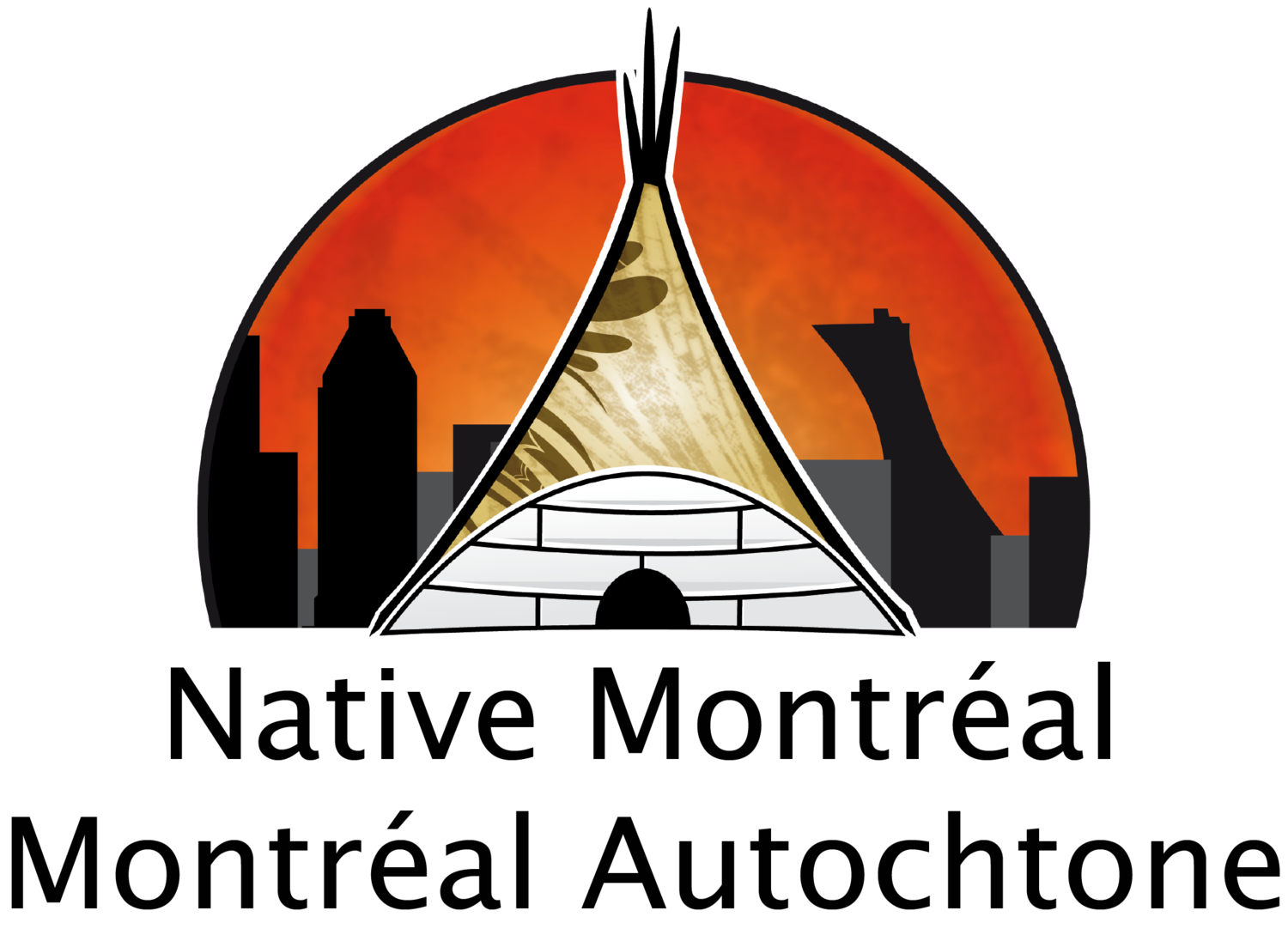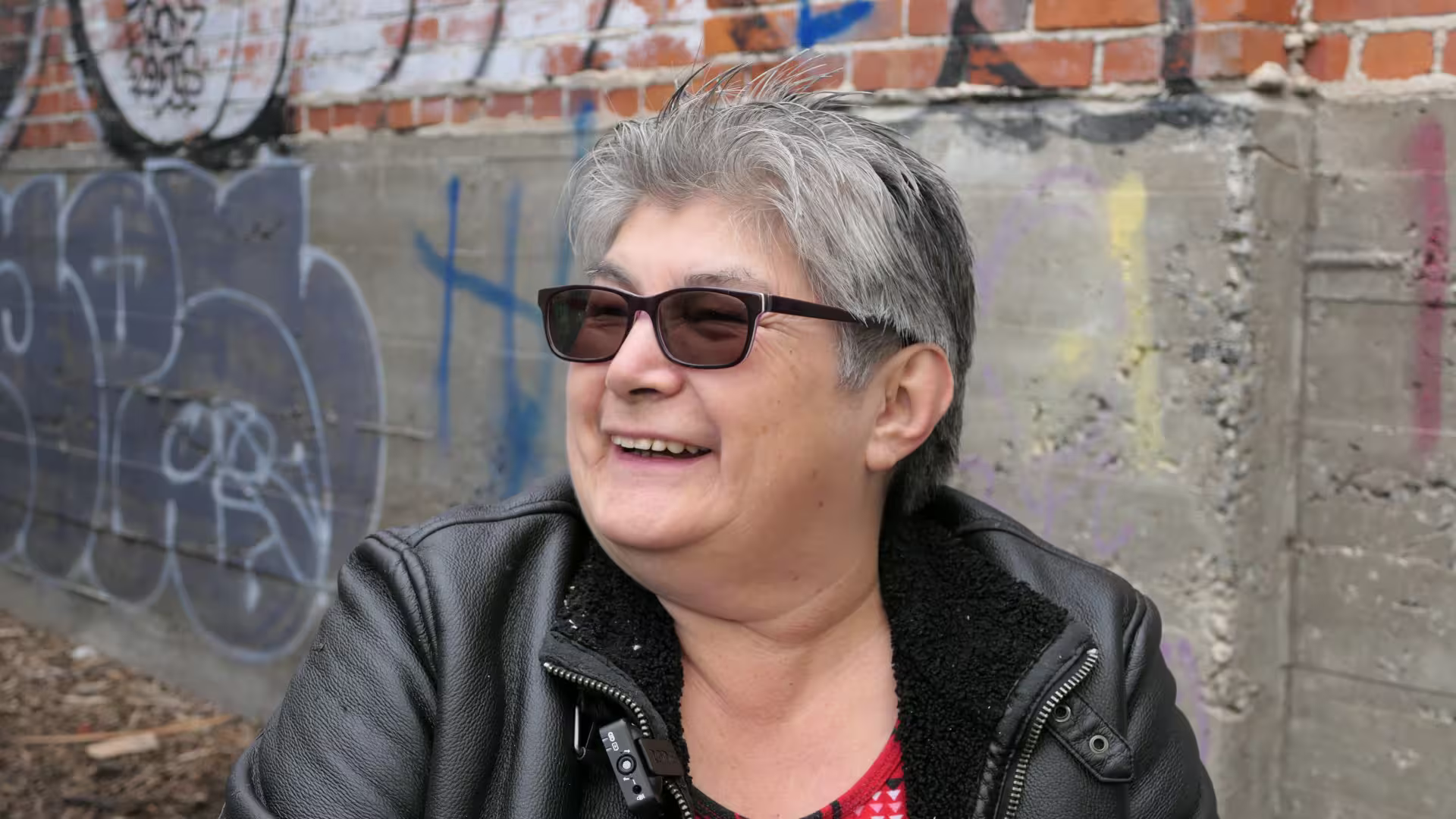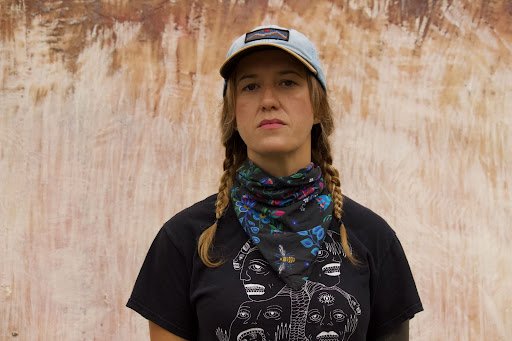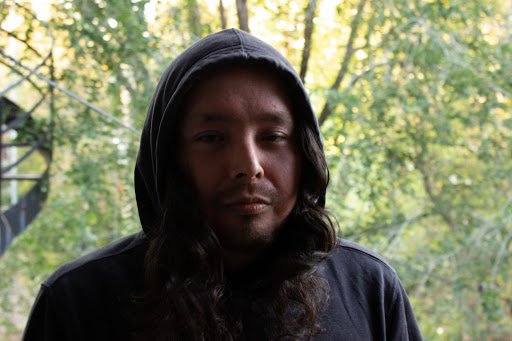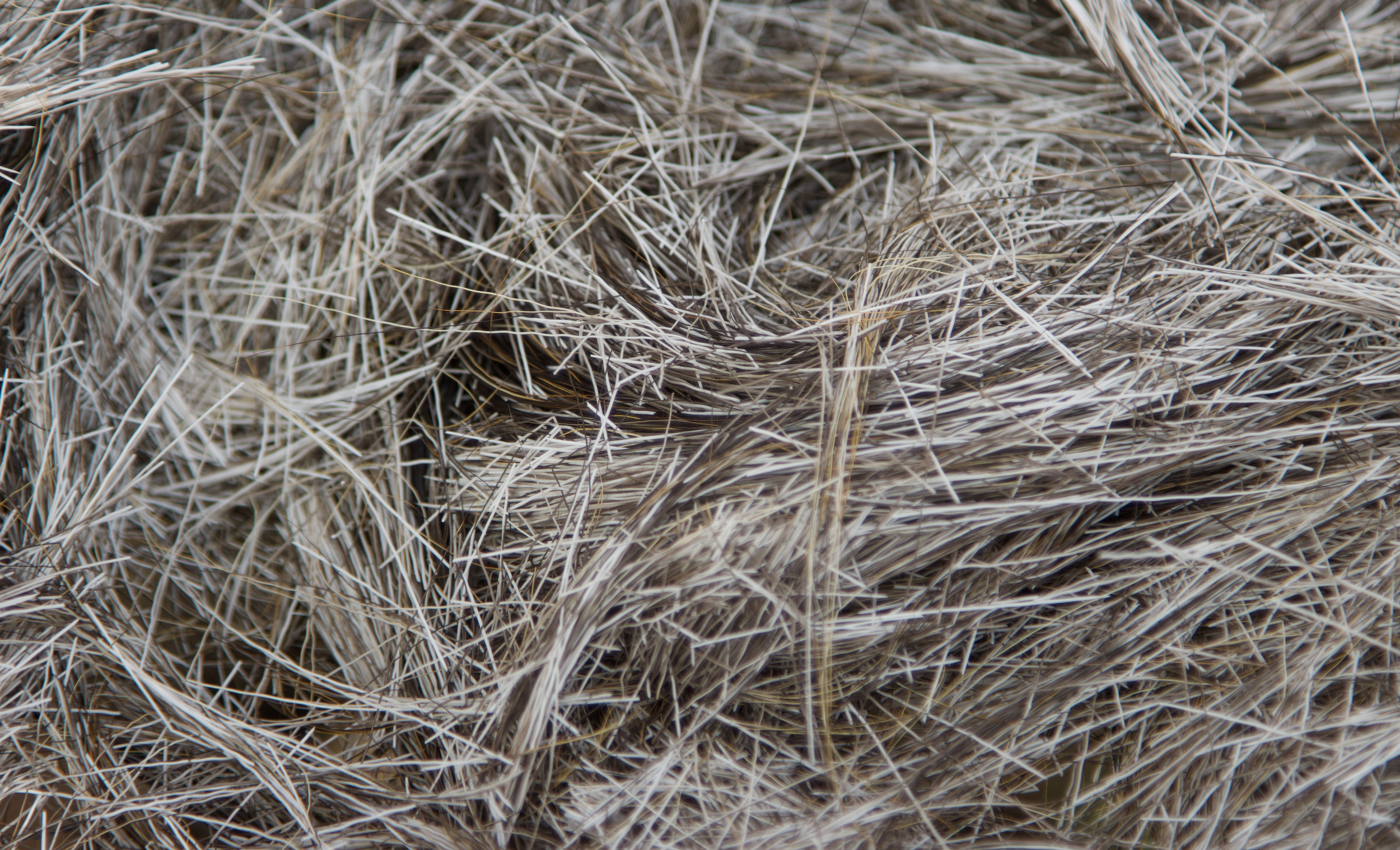
Who We Are
About Us
Buckskin Babes Urban Moose Hide tanning collective emerged at the hands of those who wanted to create an initiative that centres the reawakening of Indigenous cultural and land-based practices with an emphasis on access in the urban context.
This requires skills led by Knowledge Keepers and Elders who have maintained and continue to teach traditional ways of doing. We are an Indigenous woman and Two-Spirit led collective that facilitates annual intensive hide camps ranging from 10-14 days on-site at Bâtiment 7 - starting in 2021. Our Spring 2023 camp featured Master hide tanners from across Turtle Island. Our annual camps invite community partners and key sectors of the urban Indigenous community to join in the practice.
We have been honoured to be invited to local elementary and high schools in Kahnawà:ke to share these practices.
We continue on to bring land-based arts education to regional campuses such as Bishop’s College and Concordia University. Currently we are gearing up for this fall 2024 season to share the hide tanning experience at Dawson College.
We look forward to return to our annual hide camp programming in 2025-2026 when our base at Bâtiment 7 reopens
Our Vision
The Buckskin Babes collective is rooted in Indigenous methodologies, land-based pedagogy and an arts-education practice that is deeply collaborative, reciprocal, care-based and stems from enacting sovereignty alongside responsibility to our ancestors past, present and future.
The Buckskin Babes work in the hides project has focused on prioritising knowledge transmission intergenerationally and across Indigenous communities, while deepening Nation to Nation relations. Intentionally grounded in generating visibility and access in urban spaces for Indigenous peoples and prioritising cultural safety while modelling community care. A land-based and traditional art form, the moose hide tanning process in and of itself requires many hands and generational knowledge transmission.
Additionally, the collective has been integrating digital media and visual arts as part of the immersive moose hide experience. From hide tanning, to implementing leather via bead or quill work, to tufting, tool and toy making we have integrated photography, film, animation, digital illustration and printmaking into our collective practice.
Our Knowledge Keepers
Eleanor Hegland (left) of Lac La Ronge Indian Band and Grace Ratt (right) of Kitiganik Algonquin Territory are our key Knowledge Keepers helping us to bring the bush to the City (CBC).
Autumn Godwin
nîhithaw, Montreal Lake Cree Nation
Autumn Godwin is nihithaw iskwew from Montreal Lake Cree Nation, located on Treaty 6 territory in Northern Saskatchewan. As part of her journey to reconnect with her family, Autumn returned to her ancestral lands to reawaken cultural practices with her Elders. Her work is grounded in her community with the focus of reclaiming language, ceremony, and emancipatory practices.
Currently enrolled in her Masters with Concordia University’s Individualised Program, Autumn is pursuing research about Indigenous cultural resurgence. Creating generative spaces for Urban Indigenous peoples, sharing and disseminating this research is one of the ways in which she sees herself as facilitating the process of decolonization. In addition to her academic work, Autumn works for several community organisations that support the Indigenous community in Montreal.
Autumn is a co-founder of the Buckskin Babes urban moose hiding tanning collective. Central to this project was an effort to facilitate reconnection to the land, land-based practices and the traditional knowledge teachings that would otherwise have been passed on by community Elders, for the Urban Indigenous Community here in Tiohtià:ke. What she discovered was that not only was valuable knowledge shared, but that this process ignited community and individual healing through the creation of deep and meaningful connections. It also allowed for the creation of space for other Indigenous individuals who did not have that connection to the land and its teachings due to colonial policies.
Our Team
Brooke Rice
Kanien’keha:ka of Kahnawa:ke
Shé:kon sewakwé:on, Katsi’tsarónkwas iontia’ts. Wakehnhehsí:io niwaki’tarò:ten tanon Kahnawà:ke nitewaké:non.Most people know me as, Brooke Rice. I am Snipe clan of the Kanien’kehà:ka nation, born and raised in Kahnawà:ke. Iam currently enrolled in the Master of Arts Individualized Program at Concordia University where I hope to create experiential learning, youth mentorship in the community based on cosmological kinship systems, language, and land. I envision an environment that nourishes our gifts, the gifts our ancestors left us.
My previous studies in Ratiwennahní:rats, a Kanien’kéha language immersion program has helped to build my identity and a foundation deeply rooted in tsi niionkwariho:ten. I am passionate about learning the language of the land and tapping into ancestral blood memory while weaving my web of kinnections across Turtle Island. Being an energetic snipe, I love hanging out with my family and friends, eating scrumptious foods, foraging, learning, planting, seed saving and hunting.
Dayna Danger
Métis-Saulteaux of Winnipeg.
Boošoo, aaniin , Dayna Danger ndizhnikaas, Métis -Saulteaux ndow. Wabyska muckwa ndodem. Ningābī’anong Miiskwaagamiwiziibiing ndōnjī. Wābnong Tiohtiá:ke/Mōniyāng nōgom daya. Mīgwetch diked Unceded Kanien’kehá:ka nibabāmādiz, minawā chi’odaminwān gaye anokī-an omā aki.
Dayna Danger (they/them) is a Two-Spirit, Indigiqueer, Métis-Saulteaux-Polish, visual artist, hide tanner, drummer, and beadworker. Danger’s art practice is an act of reclaiming space and power over society's projections of sexualities and representation. This transpires in Danger’s art by their intentionally large-scale images that place importance on women-identified, Two-Spirit, transgender, and non-binary people.
Their art uses symbolic references to kink communities to critically interrogate visibility and rejection. Danger centres Kin and practises of consent to build artworks that create a suspension of reality wherein complex dynamics of sexuality, gender, and power are exchanged.
Amanda Lickers
Seneca, Six Nations of the Grand River
Iako'tsi:rareh Amanda Lickers is a multi-media artist and contributor to the Land, Body, Defense Environmental Violence Tool Kit (2016) and Dewemaagannag (My Relations) Indigenous Relations Guide (2023). Based in Tiohtià:ke, they are an educator, designer, and consultant whose work is shaped by their understanding of terra nullius as rape culture, and who looks to the interconnected relationship of land-body sovereignty. Nurturing their creative practice through land-based pedagogy and arts-based visual storytelling, their work has been exhibited at the Seneca Iroquois National Museum in Salamanca, NY and featured in public events such as Festival TransAmerique and Festival Phenomena. Their co-directed short documentary-futurisms film Our Ways (2022) has screened in Toronto, ON, Ōtāku, NZ, Montréal, QC and London, England. An emerging curator, they are the 2023-2025 Indigenous Land Restitution Research-Creation Fellow at the Canadian Centre for Architecture. Currently undertaking their Masters at Concordia University in the Individualised Studies program (expected 2025) Amanda’s research-creation reflects on onkwehón:we land-based futures interconnecting visual storytelling, Indigenous sciences, necropolitics and design sovereignty.
Craig Commanda
Algonquin, Kitigan Zibi
Anishinaabe multidisciplinary artist from Kitigan Zibi, Craig Commanda works through still and moving images, poetry, music, beadwork, and sound composition. A practice unfolding over a decade, his creative process has enabled community engagement and travel across Turtle Island and beyond.
His practice seeks resurgence contributing to cultural preservation and revitalization for and by Indigenous peoples. Craig now holds a BFA in Film from Concordia University.
Christopher Grégoire-Gabriel
Innu, Uashat
Christopher Grégoire-Gabriel est né dans la communauté de Uashat mak Mani-utenam en 1993. Jeune homme aux multiples talents, il développe depuis plusieurs années ses connaissances en tant que beatmaker.
Sa rencontre avec l’univers cinématographique l’amènera à explorer le côté technique de la caméra, devenant assistant-formateur pour plusieurs escales du Wapikoni mobile. Il décide alors de pousser plus loin son apprentissage en entrant au Mel Hoppenheim School of Cinema à l’Université Concordia, en 2016.
